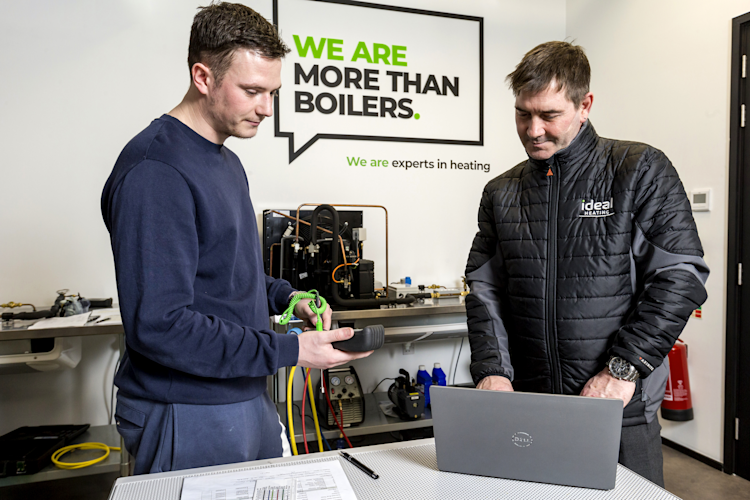
Boiler FAQs: Does a boiler cupboard require ventilation?
Modern boilers are more compact than ever, making it simple to hide them away in a discreet boiler cupboard. Before you get started though, there are some key regulations to consider if you’re planning to move your Combi boiler somewhere a little less visible.
Firstly, you’ll need to make sure your boiler cupboard has plenty of space for annual servicing and other routine maintenance. There are also regulations about where and how you can site your boiler, including rules around ventilation and the location of the flue.
In this blog, we’ll look at why a boiler cupboard could be right for you, talk about accessibility considerations, and reveal how to make sure waste gases are disposed of safely with proper ventilation.
Is a boiler cupboard the right fit for you?
If you have a compact and lightweight modern boiler, keeping it inside a boiler cupboard could be a great choice for your home. Modern boilers operate much more quietly than older models, but siting it in a boiler cupboard will make it even less noticeable as you go about your day-to-day life.
The large white boxes that provide our heating and hot water are much more sleek and understated nowadays, including our own Ideal Vogue MAX Combi. However, you may still decide to move your boiler to a custom-fit cupboard because you want to keep your home looking as tidy as possible.
Perhaps you’ll choose to fit a boiler cupboard in your kitchen, helping it to blend in with its surroundings. Whatever you decide, make sure you know the requirements for keeping your boiler safely ventilated.
Gas boiler ventilation requirements
Boiler cupboards may need adequate venting to make sure there’s a good supply of cooling air available, helping your boiler combust fuel and produce heat efficiently. Take a look at the manufacturer’s guidance for your model to find out exactly how much ventilation your boiler cupboard will need to provide.
If your property has an older back boiler, it’s unlikely you’ll be able to move it or house it in a boiler cupboard. If you are unsure of how much ventilation it needs however, take a look at the manufacturer’s instructions or get in touch with them directly to learn more.
It’s very unlikely that there are spare parts available for back boilers too, so when one breaks down it may be almost impossible to fix it properly. It’s worth bearing in mind that modern condensing boilers are much more efficient and cost effective, meaning upgrading to a new model could lead to big savings on your energy bills.
Boiler cupboards, servicing and maintenance
If you want to house your boiler in a cupboard, you need to make sure it’s accessible for day-to-day use, maintenance and servicing. You never know when you might need to access your boiler!
One of the most important things to consider is making sure there’s clearance between your boiler and the top, bottom and edges of the inside of the cupboard. Always check the manufacturer’s instructions for precise instructions on how much space to leave. The area around the cupboard should also be free of obstructions so it’s easy to open the door.
Your boiler should be serviced at least annually to make sure it’s in the best working condition, as well as making sure you protect your warranty. Take a look at our blog to find out more about what happens during a boiler service.
How to vent a boiler
Your boiler produces waste gases that are safely disposed of through a flue duct, which vents them outside your home — that’s why boilers are often located on or next to an external wall. Government regulations mean that the flue needs to be located at least 30 to 60cms away from any windows or doors, meaning they can dispose of these gases safely.
Make sure there’s no risk of the flue vent becoming blocked, as this could mean waste gases aren’t disposed of properly. We always recommend having a carbon monoxide alarm in your home to help protect you from this dangerous gas. Carbon monoxide can leak from any appliance that burns fuel if it has not been installed, ventilated or maintained properly.
If you have any questions about your specific boiler model that aren’t answered in its user manual, there are some more options you can try. Either contact the manufacturer, such as Ideal Heating, or get in touch with a Gas Safe-registered engineer.
Do you have any more questions about ventilation or installing a boiler cupboard? Contact us on Twitter, LinkedIn or Facebook and we’ll point you in the right direction to get the answers you need.


















